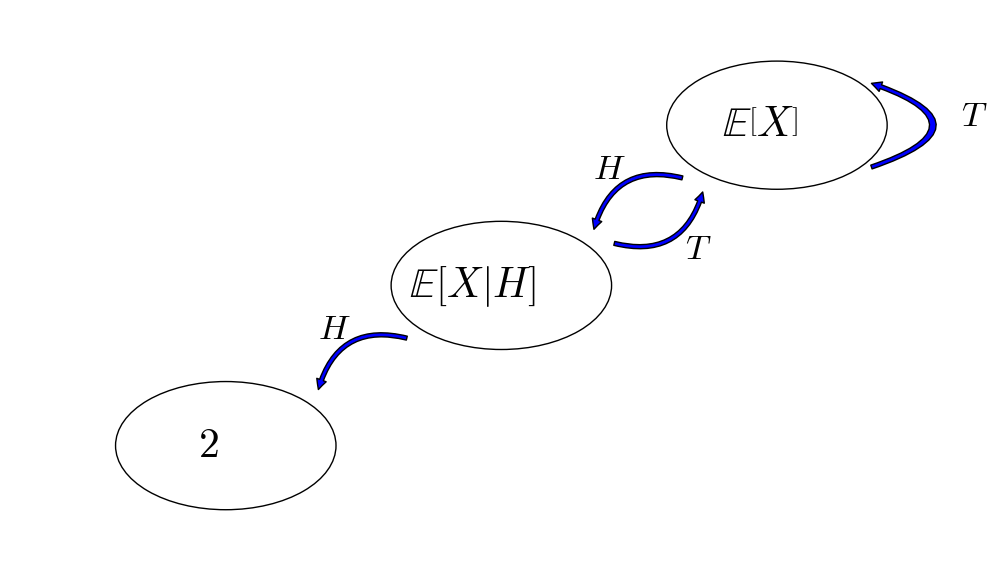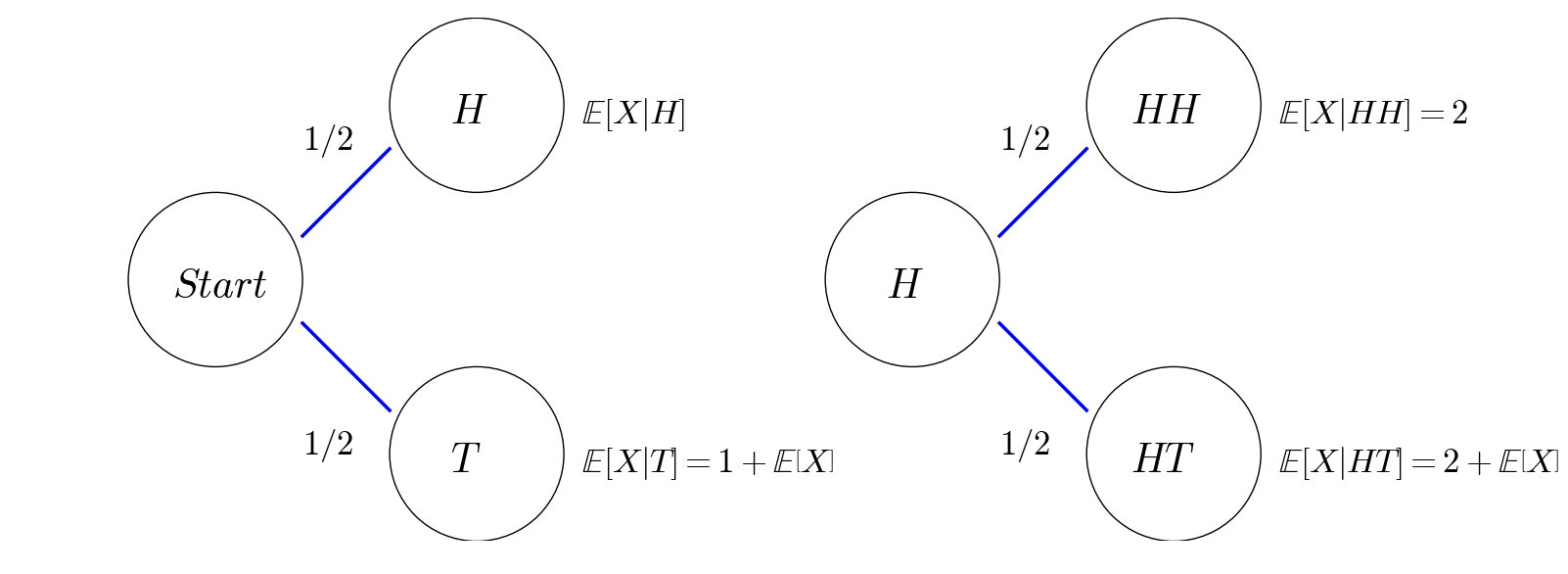The Most Frequently Asked Question About Expectations

Problem
Suppose we toss a fair coin, what is the expected number of tosses until we get two heads in a row?
I’ll show three ways of solving this problem.
Method I: Recursive Expectation in Two Steps
Let \(X\) be the number of tosses until we get two heads in a row, then we use the recursive relations of expectations to write down an equation of \( \mathbb{E}\left[X\right] \) as follows:
This recursive relation can be better explained by the probabilistic tree below:

For those who know Markov chains, we can also draw a state transition diagram as follows:

Method II: Recursive Expectation in One Step
This mehod is almost the same as Method I, except that we use the recursive relations of expections to write down a system of equations to solve:

As you see more examples in my next post, it is more common to formulate a system of equation, rather than a single equation, for the problem of recursive expectations.
Method III: Martingale Approach (Optional)
We introduce a random process \( X_n,n\geq 1 \) as a random process to represent the coin toss process, that is,
Note that \( X_n \) is a martingale. And we use another random process \( Y_n,n\geq 1 \) to represent our trading strategy,
This means that we start our first bet with \($1\), then we double our bet to \($2\) if the previous coit toss turns out to be head and still bet \($1\) otherwise.
Consequently, our wealth process \(Z_n = Y_1X_1 + \sum_{i=2}^n Y_i(X_i - X_{i-1})\) is given by
Indeed, \(Z_n\) is a discrete-time stochastic integral with respect to \(X_n\), and therefore, \(Z_n\) is also a martingale.
Now, we define a stopping time \(\tau = \min\{n\geq 2: X_n = 1, X_{n-1}=1\}\). The definition of \(\tau\) would imply that \(X_1=\cdots=X_{\tau-2}=0,X_{\tau-1}=X_{\tau}=1\).
Finally, we invoke the optinal sampling theorem to get